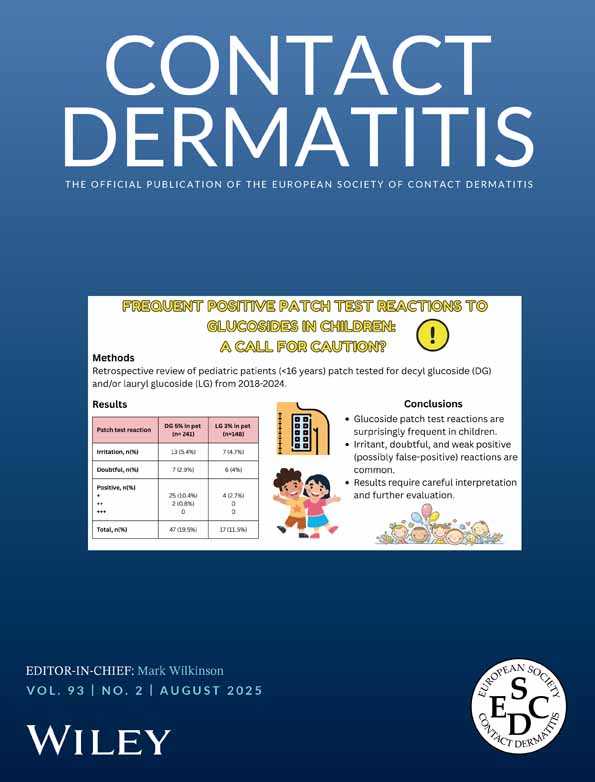Cytostatic agents and contact allergy: the efferent limb
Abstract
The effects upon the contact allergic reaction in the guinea pig or the 3 cytostatic agents most commonly used for their immunosuppressant properties, cyclophosphamide, methotrexate and azothioprine, have been investigated in an experimental model which allows comparison of the qualitative and qualitative aspects of the dermal inflammatory infiltrate and the macroscopic response. The 3 agents were given in single, relatively high doses and had effects on the dermal inflammatory infiltrate which varied in nature, degree and time course. Changes often showed a cyclical development with time, with “rebound” often following initial changes. Although cyclophosphamide had the most marked effect, all agents affected the mononuclear, basophil and eosinophil dermal infiltrates at some point in the experiment. Cyclophosphamide was the only agent found to affect the total white cell count of peripheral blood, but the leukopenia did not affect recruitment of mononuclear cells to the dermis. In the period immediately after administration of cyclophosphamide and methotrexate, the macroscopic score increased. Whilst the mechanism of this effect, is unclear, it may be a manifestation of a basophil, perhaps IgE mediated reaction. Further manipulation of dose and dose interval may result in administration schedules relevant to the treatment of cell-mediated hypersensitivity in clinical practice.




